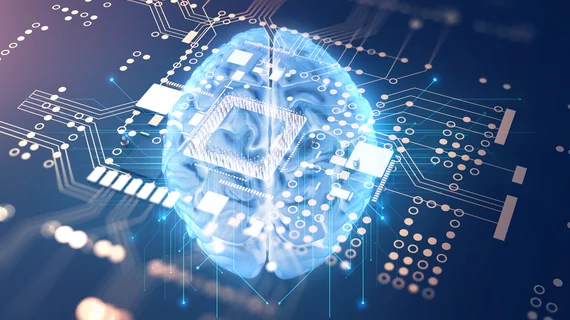Machine learning predicts potential complications in CT-guided thoracic biopsies
CT-guided transthoracic biopsy performed by expert radiologists is both accurate and safe, and when paired with machine learning, can help physicians predict the likelihood of complications.
Doctors from the University of Pennsylvania’s Perelman School of Medicine examined nearly 800 CTTB procedures performed in a tertiary hospital for their research published in Academic Radiology. In 97% of these minimally invasive procedures, diagnostic yield proved to be “excellent,” with complications occurring in only 2% of cases.
While CTTB is relatively safe and preferred over other methods to biopsy thoracic lesions, first author Eduardo J. Mortani Barbosa Jr., MD, and colleagues found a neural network model could predict the severity of complications when they do happen in up to 94% of situations.
“These results suggest that sophisticated statistical models, especially with machine learning, may be accurate enough to allow pre-procedure prediction of CTTB related complications, based solely on imaging and clinical data, therefore allowing preemptive preventive measures to be applied in higher risk patients,” the authors added.
Historically, clinicians have been forced to choose between CCTB and a percutaneous transbronchial approach. The former is typically favored for its higher sensitivity, but does come with increased risk for complications compared to the latter.
With this in mind, the researchers retrospectively gather 769 CTTBs performed at a tertiary hospital, along with coded patient demographics, characteristics of each lesion biopsied, type of biopsy, diagnostic yield, type of diagnosis and complication rates.
Results revealed minor complications in 12.7% of cases, which most often proved to be minor pneumothorax (13.1%), and major adverse events in 2% of instances.
Barbosa Jr., and colleagues found that logistical regression models could predict the severity of complications in 65.5% to 83.5% of cases. With a neural network model, however, that accuracy rate jumped, ranging from 77% to 94.2%.
There are of course limitations to the research, the group added, including its single-center design. Despite this fact, they believe future investigations should move toward developing an AI model that can combine imaging characteristics with clinical parameters to predict a diagnosis.
“Complications can be predicted with good accuracy utilizing machine learning models, particularly neural networks, potentially allowing preemptive decisions in patients deemed at higher complication risk before CTTB is actually performed, to mitigate these risks,” they commented. “The high performance of CTTB supports its use as a first-line diagnostic procedure, especially when performed at high volume centers by expert thoracic radiologists.”

